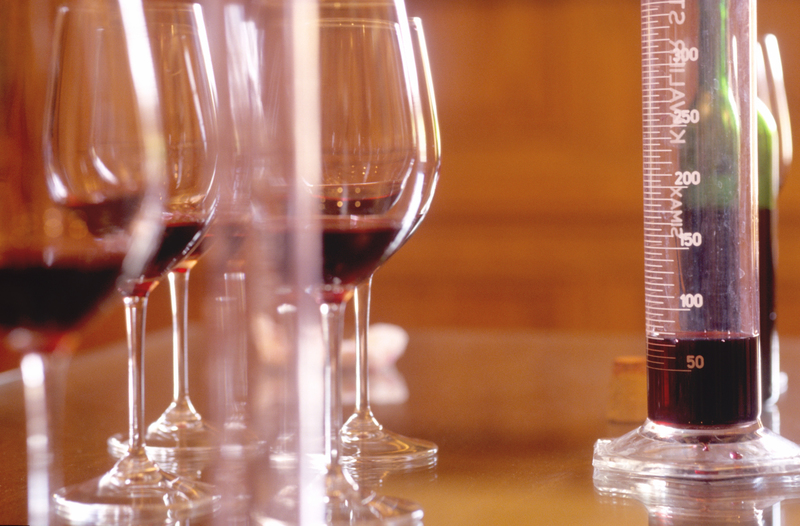L’assemblage vin est un art subtil qui façonne l’identité des plus grands crus. Il ne s’agit pas seulement de mélanger différents cépages, mais de créer un équilibre parfait entre structure, arômes et potentiel de garde. Cette étape essentielle de la techniques vinification est pratiquée dans de nombreuses régions viticoles, notamment à Bordeaux et en Champagne.
Comment procède-t-on à un assemblage réussi ? Quels sont les critères essentiels pour produire des grands crus ? Découvrons les secrets derrière cette alchimie viticole.
Qu’est-ce que l’assemblage vin ?

L’assemblage consiste à associer plusieurs cépages ou plusieurs parcelles d’un même domaine pour créer un vin harmonieux. Contrairement aux vins monocépages qui mettent en avant une seule variété de raisin, l’assemblage permet d’enrichir la complexité et d’améliorer l’équilibre général du vin.
Pourquoi assembler plusieurs vins ?
- Équilibrer les saveurs : chaque cépage apporte des caractéristiques uniques en termes d’acidité, de tannins et d’arômes.
- Optimiser le potentiel de garde : certaines variétés vieillissent mieux que d’autres, un assemblage bien conçu renforce la longévité du vin.
- Corriger les variations climatiques : en année difficile, l’assemblage permet de compenser un manque d’arômes ou de structure.
Les grandes régions de vins d’assemblage
Certaines régions viticoles sont réputées pour la pratique de l’assemblage, notamment :
- Bordeaux : L’assemblage classique combine le Cabernet Sauvignon, le Merlot et le Cabernet Franc pour créer des vins complexes et équilibrés.
- Champagne : L’association du Chardonnay, du Pinot Noir et du Pinot Meunier permet de produire des cuvées élégantes et expressives.
- Châteauneuf-du-Pape : Cette appellation du Rhône assemble jusqu’à 13 cépages différents, offrant des vins riches et puissants.
L’assemblage est aussi utilisé dans d’autres régions, notamment en Provence pour les rosés ou en Languedoc pour les vins rouges et blancs.
Les étapes clés de l’assemblage vin
L’assemblage suit plusieurs étapes essentielles pour garantir la qualité et la cohérence du vin final.
1. La sélection des vins de base
Avant d’assembler, le vigneron déguste chaque vin séparément. Il analyse :
- Les caractéristiques aromatiques : fruité, floral, épicé, minéral.
- La structure en bouche : acidité, tannins, rondeur.
- Le potentiel de vieillissement : aptitude à se bonifier avec le temps.
2. Les essais d’assemblage
Les premières tentatives sont réalisées en petite quantité. Le vigneron mélange différents pourcentages de cépages pour identifier le meilleur équilibre.
3. L’affinage de l’assemblage
Une fois la combinaison idéale trouvée, l’assemblage est affiné en cuve ou en barrique pour permettre aux différentes composantes de s’harmoniser.
4. La mise en bouteille
Après une période de repos, le vin est filtré et mis en bouteille. Certains grands crus nécessitent encore plusieurs années de vieillissement avant d’être commercialisés.
Les cépages les plus utilisés dans l’assemblage des grands crus
Chaque cépage possède ses spécificités et joue un rôle clé dans la construction du vin final.
En rouge
- Cabernet Sauvignon : structure tannique, arômes de fruits noirs et épices.
- Merlot : rondeur, fruité intense, souplesse.
- Syrah : puissance, notes poivrées et florales.
- Grenache : douceur, chaleur et notes de fruits rouges mûrs.
En blanc
- Chardonnay : élégance, rondeur et potentiel de garde.
- Sauvignon Blanc : fraîcheur, acidité et arômes d’agrumes.
- Riesling : vivacité et complexité aromatique.
- Viognier : intensité florale et texture veloutée.
Le choix des cépages dépend de l’objectif recherché par le vigneron et des spécificités du terroir.
Comment reconnaître un vin issu d’un assemblage réussi ?
Un assemblage bien maîtrisé doit offrir :
- Un équilibre parfait entre acidité, tannins et arômes.
- Une complexité aromatique, avec plusieurs niveaux de saveurs qui évoluent en bouche.
- Une belle longueur : les meilleurs assemblages laissent une empreinte persistante après la dégustation.
Dans les grands crus, l’assemblage est conçu pour exprimer le meilleur du terroir et garantir une qualité constante d’un millésime à l’autre.
L’assemblage dans la production des vins effervescents
L’assemblage est une étape essentielle pour les vins mousseux, notamment en Champagne.
- Les maisons de Champagne créent des cuvées homogènes en mélangeant plusieurs millésimes et parcelles.
- Le Chardonnay apporte fraîcheur et finesse, tandis que le Pinot Noir ajoute de la structure et le Pinot Meunierdu fruité.
- Les cuvées millésimées, qui ne sont produites que lors des grandes années, reflètent davantage les spécificités du terroir et de l’année de récolte.
Un bon assemblage garantit une constance et une élégance qui font la renommée des grandes maisons.
Les défis et limites de l’assemblage
Bien que l’assemblage permette de sublimer un vin, il comporte aussi des défis :
- La variabilité des cépages : chaque année, la qualité des raisins change selon les conditions climatiques.
- L’expérience du vigneron : réussir un bon assemblage demande une grande expertise et un palais affûté.
- Le respect du terroir : un assemblage doit refléter l’identité d’un vignoble sans masquer son authenticité.
Les grands vignerons savent jongler avec ces paramètres pour produire des vins d’exception.
Conclusion
L’assemblage vin est une techniques vinification clé dans l’élaboration des grands crus. Il permet d’harmoniser les cépages et de révéler tout le potentiel d’un terroir. Grâce à un équilibre précis entre structure, arômes et longévité, les vins d’assemblage comptent parmi les plus prestigieux au monde.
Si vous avez apprécié cet article, n’hésitez pas à lire l’article suivant “Les vins blancs moelleux : idéal pour accompagner les plats sucrés-salés“, qui pourrait également vous intéresser !





